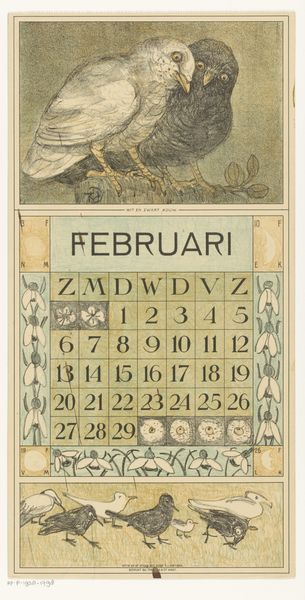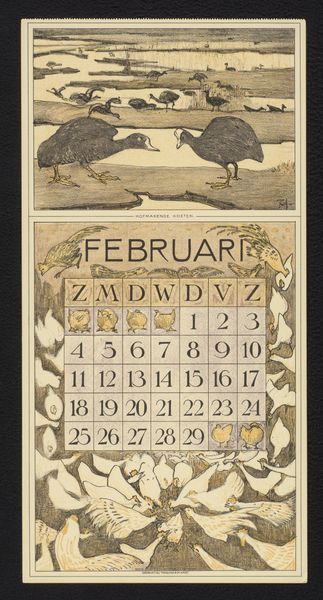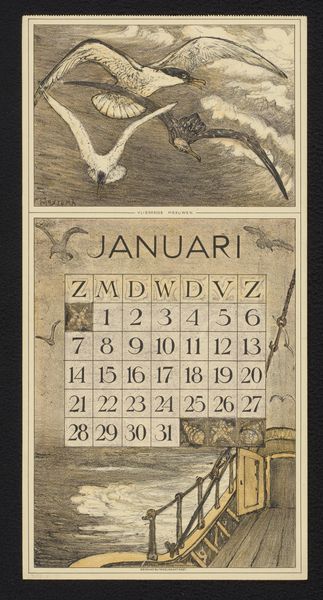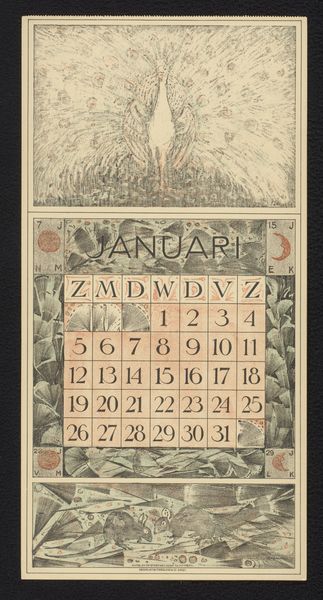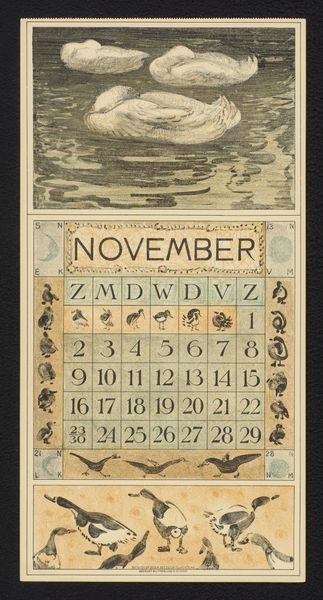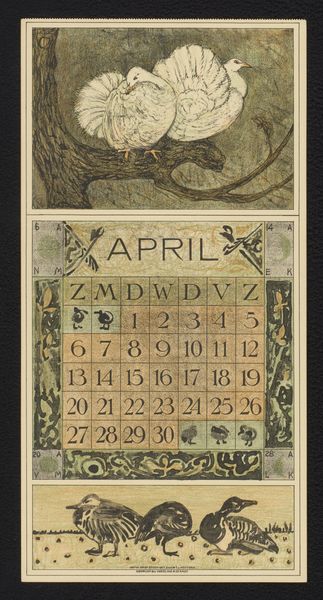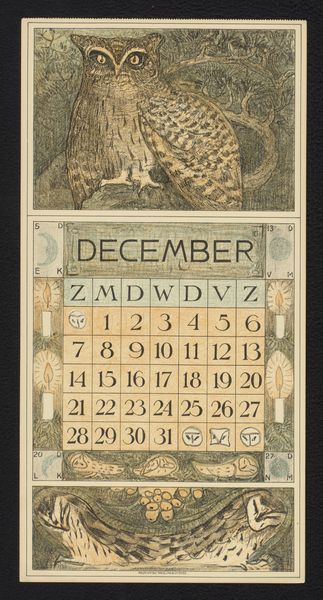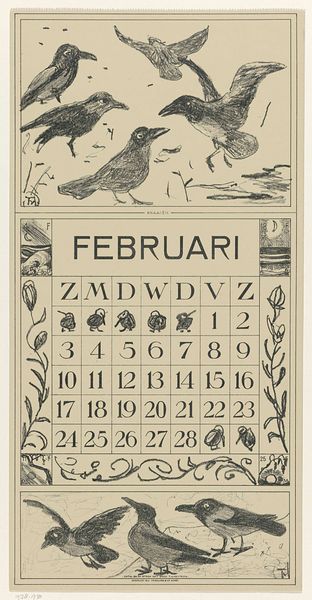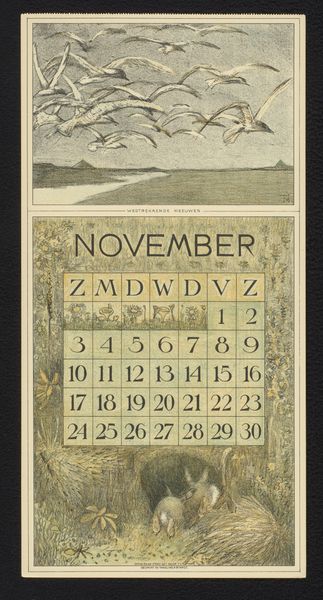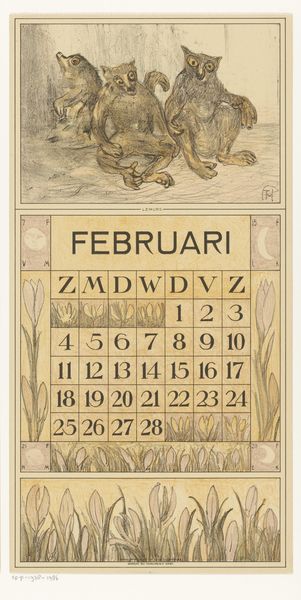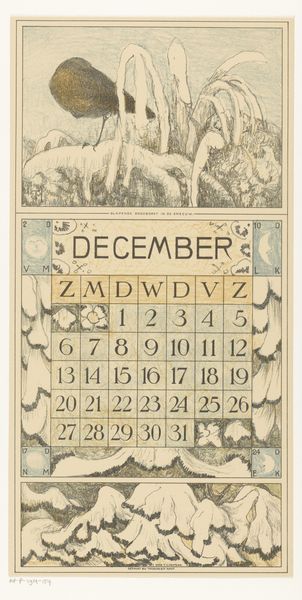
drawing, print, paper, pencil
#
drawing
#
art-nouveau
#
animal
# print
#
landscape
#
paper
#
pencil
Dimensions: height 419 mm, width 212 mm
Copyright: Rijks Museum: Open Domain
Editor: This is Theo van Hoytema’s "Kalenderblad voor februari 1914 met een konijn", a calendar sheet for February 1914 featuring a rabbit, made in 1913. It seems to be a print, maybe with pencil. I’m really struck by how this functional object is also a delicate work of art, like those Art Nouveau botanical motifs circling the calendar days. What stands out to you? Curator: For me, it’s about understanding this calendar as an object of both art and commerce. The production of printed calendars in the early 20th century was a booming industry, driven by advances in printing technology and the growing consumer culture. Consider the materiality here - paper, ink, and the mechanisms of mass production. These determined both the artwork’s aesthetic and its accessibility. Editor: That's interesting. I hadn't really considered the 'mass production' aspect. Curator: Absolutely. Think about the social context too. Art Nouveau was embracing decorative arts and design. Do you see how the integration of “high” art with everyday items like calendars democratized aesthetics but also commodified them? Was this calendar intended for the wealthy or middle-class consumers, and how does its aesthetic appeal speak to their desires and values? Editor: It definitely makes me think differently about art objects like this, how the context of its production influences my reading of its visual appeal. Thanks for the insight! Curator: And I appreciate your eye for the formal aspects; that framing helps us to think more deeply about material culture and art's entanglement with industrial processes.
Comments
No comments
Be the first to comment and join the conversation on the ultimate creative platform.
